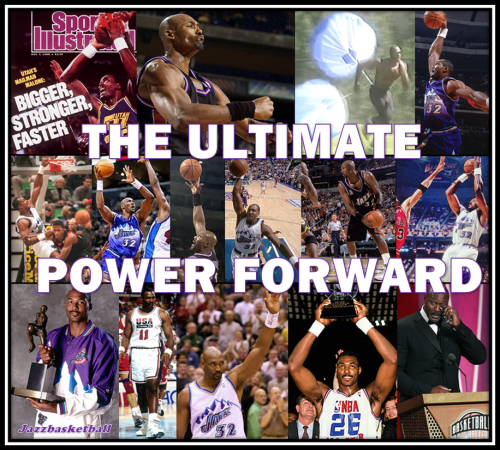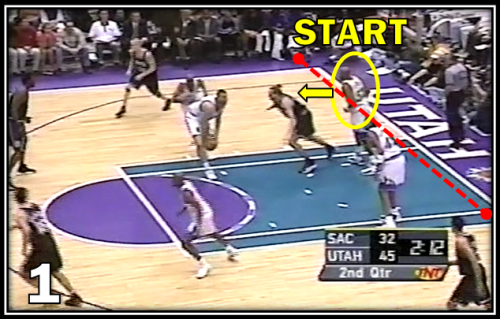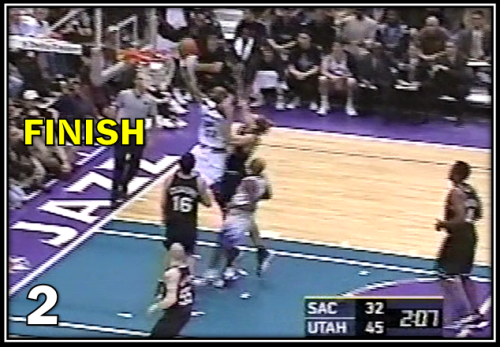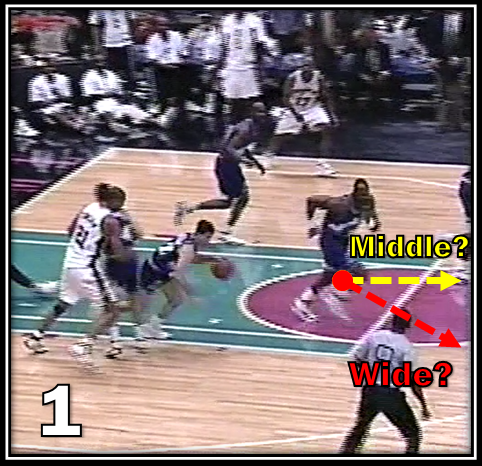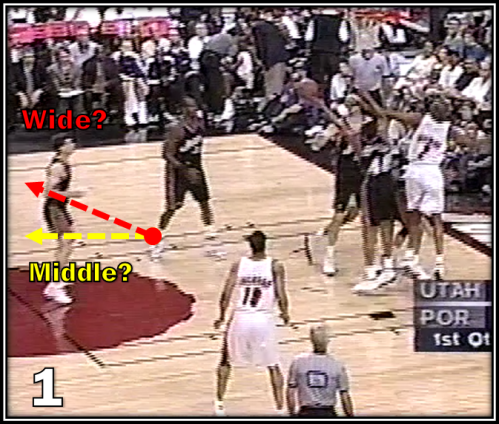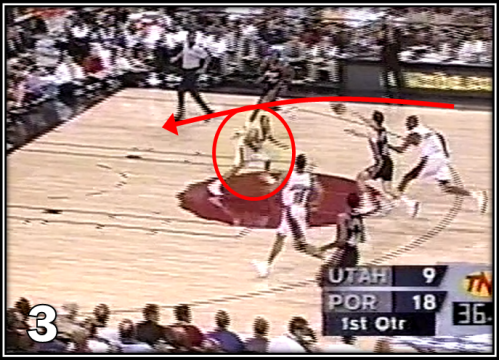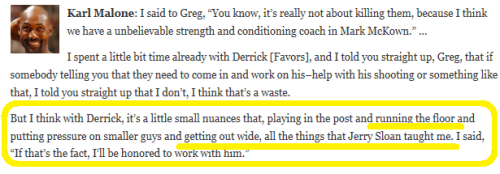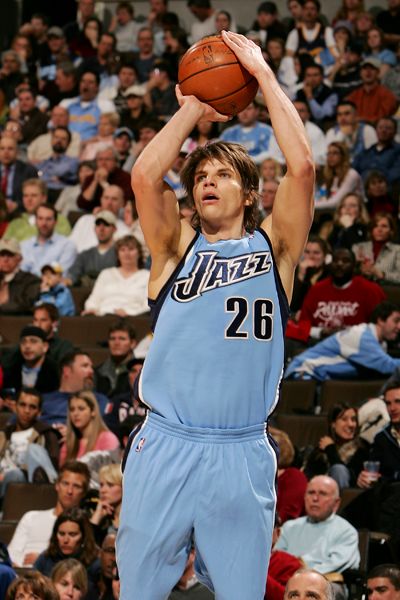Lost amid Wednesday night’s homecoming buzz for former Jazzmen Deron Williams and Andrei Kirilenko was the very real possibility that Brooklyn’s 105-99 victory over the Jazz could have been the final game Kevin Garnett ever plays in Utah.
The first time Kevin Garnett played a regular season game at the Delta Center, he came off the bench behind Sam Mitchell. His head coach at the time, Flip Saunders, boasted a coaching record that stood at 1-4 and not the 638-526 mark it does today. The leading scorers on his team were Tom Gugliotta, J.R. Rider and Sean Rooks.
Sound like nearly two decades ago? It was. Trey Burke was 3 at the time.
On that late December evening in 1995, a 19-year old KG scored 6 points and grabbed 6 rebounds in 22 minutes for the Timberwolves. On Wednesday night, a 37-year old KG scored 6 points and grabbed 4 rebounds in 17 minutes.
While KG’s play and production has marginally decline for the past several seasons in Boston, this season it has fallen off the proverbial cliff to the point the Big Ticket is now obviously running on fumes.
My most fond memories of Kevin Garnett are the fierce battles he had against Karl Malone and the respect he showed for him. On January 19, 2000, KG scored a game-high 31 points in defeating the division-leading Jazz 91-88 at the Delta Center. Following the game, the 23-year old Garnett approached the 36-year old Malone and told the league’s reigning MVP he disagreed with the recently released All-Star voting, feeling that Malone deserved to be a starter and not himself.
The respect KG showed for the league’s greatest power forward continued ten days later in Minneapolis. Karl Malone surpassed the 30,000th point plateau, a milestone that was recognized by the Target Center’s public address announcer. As the T-Wolves fans offered their polite applause, Garnett waved his arms to exhort the crowd and Malone ended up receiving a standing ovation from the Minnesota fans.
Despite the dissimilarities in their styles and KG spending the first 4 years of his career at small forward, in many ways both players redefined the power forward position. Malone became the best to ever play the position by merging his relentless physicality and power with an elite scoring skillset. Garnett brought finesse and athleticism to go with remarkable dexterity and unbridled passion in showing the position could be played post-1980’s at an elite level despite a lack of broad shoulders and powerful frame. He’s arguably the greatest defensive power forward to ever play the game and represents the prototype for the ideal power forward in the new millennium.
The other similarity both Malone and Garnett shared is they played the game the right way – passionately and competitively – giving maximum intensity and effort at both ends of the court all toward one goal that wasn’t self-promotion but rather winning. They were old school with their toughness and their attitude, as KG brought some of the NBA’s 90’s nastiness into the new “hug and kiss” post Artest-melee league. Combined with an ability to score the basketball that few power forwards have ever possessed, when those two faced off they treated fans to battles that only augments the their legendary careers with the passing of time. Their meeting on February 17, 2003 is a perfect example.
A few of things to note:
- First, their statlines. Garnett scored a game-high 34 points, to go with 10 rebounds, 6 assists 1 steal and 1 block. Malone scored 28 points with 9 rebounds and 6 assists. Both were incredibly efficient, with KG shooting 13-22 (59%) from the field and 7-9 from the foul line. Malone shot 10-14 (71%) and 8-9 from the stripe.
- Second, their effort. It was a 12-point game with a minute to play, and both Malone and Garnett show no hesitation in diving to the floor for a loose-ball. Malone was 39 year old. Garnett had dislocated a finger on his right hand earlier but still wedged his hand in while wrestling for the basketball (in the 3rd-quarter KG walked to the bench, sat down, looked away as the trainer popped it back in and then returned to the game).
- Third, label this exhibit-Z why Karl Malone was a freak of nature. He was 39 years old and still capable of playing at this level. THIRTY-NINE! For as much as KG’s mind wants to play at a certain level, this season he is calcifying right before our eyes at age 37. Considering Garnett’s in his 19th season and has played over 48,000 minutes, that’s certainly expected but it just illustrates the absurd and unmatched degree to which Karl Malone defied Father Time, even in 2003 during his 18th season at over 52,000 career minutes.
- Final Note: On Jerry Sloan’s technical, the urgency at which Jazz trainer Gary Briggs and assistant Gordan Chiesa moved to reel him followed by Jerry’s subtle wink and “I’m all right” assurance has a small backstory. This was only Jerry’s second game back since returning from a 7-game suspension for shoving referee Courtney Kirkland. Given that this was his first technical foul since and that it involved Violet Palmer, it’s apparent everyone on the Jazz was relieved the situation was diffused quickly.
________________________________________
While some may prefer Garnett to call it quits as soon as possible, I have no problem with him playing until the well runs completely dry. Great players who have given so much to the game deserve to leave on their terms, not their fans’ terms.
Personally, I’ve always felt more closure when a great athlete retires well past his prime rather than during it. This was true as Malone limped to the finish line in the 2004 playoffs with LA and when Michael Jordan finished out his career in DC. They may not have been as good as they once were, but every once in a while they would come close and those games just felt magical – as if you were granted the gift to travel back in time to witness one final great performance as the curtain was lowering for good.
The end may be near for KG’s career, but that will in no way tarnish the brilliance of his illustrious career. And when Garnett is rightfully inducted into Springfield, it would be fitting if Karl Malone was the one to present him.

